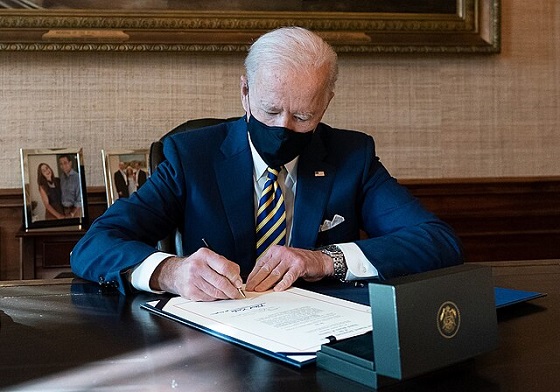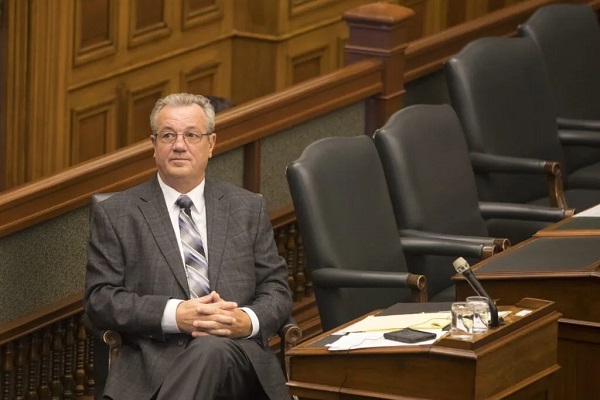Alberta
Province pumping millions into mental health supports for post-secondary students

Representatives from the Student Counseling Office and Mental Health at NAIT, Kids Help Phone, United Way and members of Alberta Students’ Executive Council stood with Associate Minister Luan and Minister Nicolaides
From the Province of Alberta
More mental health supports for students
Government is investing $22 million to deliver more mental health supports for post-secondary students.
Students at the 26 post-secondary institutions across Alberta will have more access to mental health and addiction crisis supports through text and chat, and professional counselling by phone. Those services will be supported by a new digital navigation and crisis hub that will link service providers, including United Way’s 211 service, helplines such as Kids Help Phone, HealthLink/811 and other distress lines.
“Our government is committed to eliminating barriers to mental health and addiction services for post-secondary students. Working together, we’ll make it easier for students to talk openly about mental health and ensure they have access to supports when they need them.”
In addition, Budget 2019 continues to support a range of on-campus mental health services, including:
- increased access to counsellors
- early alert systems
- peer support programs
- awareness campaigns and mental health literacy
- training for faculty, staff and students in suicide-prevention
- helping others in distress
- personal coping strategies
“One of the common themes I have heard from our students, from Day 1, is the need to strengthen mental health supports on campus. This initiative will improve access to mental health services and will make sure our students can find help when they need it. I am always listening to students, and this announcement demonstrates their advocacy pays off.”
On-campus services are supported by the Post-secondary Mental Health Grant of $7.6 million this year.
In addition, government is funding expansion of digital services by providing $6.75 million to Kids Help Phone to expand its 24-7, free, confidential and professional online and telephone counselling and volunteer-led text-based crisis support. Another $7.5 million will fund a new digital navigation and crisis hub that will link United Way’s 211 service to other helplines such as Kids Help Phone, HealthLink/811 and other distress lines.
“Kids Help Phone is pleased to be a part of this initiative that will help Albertans, particularly post-secondary students, connect to the services they need in a timely fashion. Navigating the mental health system is complex and we are proud to work with partners to ensure all Albertans get the help they need, when they need it most.”
“More than 500,000 Albertans access at least one mental health service each year, with many others unable to get help when they need it. With this partnership, Albertans will have access to information and help at any time no matter where they live in the province, allowing anyone to connect when they need to most.”
“Mental health is critical to the success and well-being of everyone. In order to thrive inside the classroom and beyond, mental health needs to be supported.”
Alberta
Alberta takes big step towards shorter wait times and higher quality health care

From the Fraser Institute
On Monday, the Smith government announced that beginning next year it will change the way it funds surgeries in Alberta. This is a big step towards unlocking the ability of Alberta’s health-care system to provide more, better and faster services for the same or possibly fewer dollars.
To understand the significance of this change, you must understand the consequences of the current (and outdated) approach.
Currently, the Alberta government pays a lump sum of money to hospitals each year. Consequently, hospitals perceive patients as a drain on their budgets. From the hospital’s perspective, there’s little financial incentive to serve more patients, operate more efficiently and provide superior quality services.
Consider what would happen if your local grocery store received a giant bag of money each year to feed people. The number of items would quickly decline to whatever was most convenient for the store to provide. (Have a favourite cereal? Too bad.) Store hours would become less convenient for customers, alongside a general decline in overall service. This type of grocery store, like an Alberta hospital, is actually financially better off (that is, it saves money) if you go elsewhere.
The Smith government plans to flip this entire system on its head, to the benefit of patients and taxpayers. Instead of handing out bags of money each year to providers, the new system—known as “activity-based funding”—will pay health-care providers for each patient they treat, based on the patient’s particular condition and important factors that may add complexity or cost to their care.
This turns patients from a drain on budgets into a source of additional revenue. The result, as has been demonstrated in other universal health-care systems worldwide, is more services delivered using existing health-care infrastructure, lower wait times, improved quality of care, improved access to medical technologies, and less waste.
In other words, Albertans will receive far better value from their health-care system, which is currently among the most expensive in the world. And relief can’t come soon enough—for example, last year in Alberta the median wait time for orthopedic surgeries including hip and knee replacements was 66.8 weeks.
The naysayers argue this approach will undermine the province’s universal system and hurt patients. But by allowing a spectrum of providers to compete for the delivery of quality care, Alberta will follow the lead of other more successful universal health-care systems in countries such as Australia, Germany, the Netherlands and Switzerland and create greater accountability for hospitals and other health-care providers. Taxpayers will get a much better picture of what they’re paying for and how much they pay.
Again, Alberta is not exploring an untested policy. Almost every other developed country with universal health care uses some form of “activity-based funding” for hospital and surgical care. And remember, we already spend more on health care than our counterparts in nearly all of these countries yet endure longer wait times and poorer access to services generally, in part because of how we pay for surgical care.
While the devil is always in the details, and while it’s still possible for the Alberta government to get this wrong, Monday’s announcement is a big step in the right direction. A funding model that puts patients first will get Albertans more of the high-quality health care they already pay for in a timelier fashion. And provide to other provinces an example of bold health-care reform.
Alberta
Alberta’s embrace of activity-based funding is great news for patients

 From the Montreal Economic Institute
From the Montreal Economic Institute
Alberta’s move to fund acute care services through activity-based funding follows best practices internationally, points out an MEI researcher following an announcement made by Premier Danielle Smith earlier today.
“For too long, the way hospitals were funded in Alberta incentivized treating fewer patients, contributing to our long wait times,” explains Krystle Wittevrongel, director of research at the MEI. “International experience has shown that, with the proper funding models in place, health systems become more efficient to the benefit of patients.”
Currently, Alberta’s hospitals are financed under a system called “global budgeting.” This involves allocating a pre-set amount of funding to pay for a specific number of services based on previous years’ budgets.
Under the government’s newly proposed funding system, hospitals receive a fixed payment for each treatment delivered.
An Economic Note published by the MEI last year showed that Quebec’s gradual adoption of activity-based funding led to higher productivity and lower costs in the province’s health system.
Notably, the province observed that the per-procedure cost of MRIs fell by four per cent as the number of procedures performed increased by 22 per cent.
In the radiology and oncology sector, it observed productivity increases of 26 per cent while procedure costs decreased by seven per cent.
“Being able to perform more surgeries, at lower costs, and within shorter timelines is exactly what Alberta’s patients need, and Premier Smith understands that,” continued Mrs. Wittevrongel. “Today’s announcement is a good first step, and we look forward to seeing a successful roll-out once appropriate funding levels per procedure are set.”
The governments expects to roll-out this new funding model for select procedures starting in 2026.
* * *
The MEI is an independent public policy think tank with offices in Montreal, Ottawa, and Calgary. Through its publications, media appearances, and advisory services to policymakers, the MEI stimulates public policy debate and reforms based on sound economics and entrepreneurship.
-

 Also Interesting2 days ago
Also Interesting2 days agoMortgage Mayhem: How Rising Interest Rates Are Squeezing Alberta Homeowners
-

 Alberta2 days ago
Alberta2 days agoAlberta takes big step towards shorter wait times and higher quality health care
-

 Justice2 days ago
Justice2 days agoCanadian government sued for forcing women to share spaces with ‘transgender’ male prisoners
-

 Business1 day ago
Business1 day agoStocks soar after Trump suspends tariffs
-

 COVID-191 day ago
COVID-191 day agoBiden Admin concealed report on earliest COVID cases from 2019
-

 MAiD2 days ago
MAiD2 days agoDisability rights panel calls out Canada, US states pushing euthanasia on sick patients
-

 Business2 days ago
Business2 days agoTrump raises China tariffs to 125%, announces 90-day pause for countries who’ve reached out to negotiate
-

 COVID-192 days ago
COVID-192 days agoRandy Hillier wins appeal in Charter challenge to Covid lockdowns





